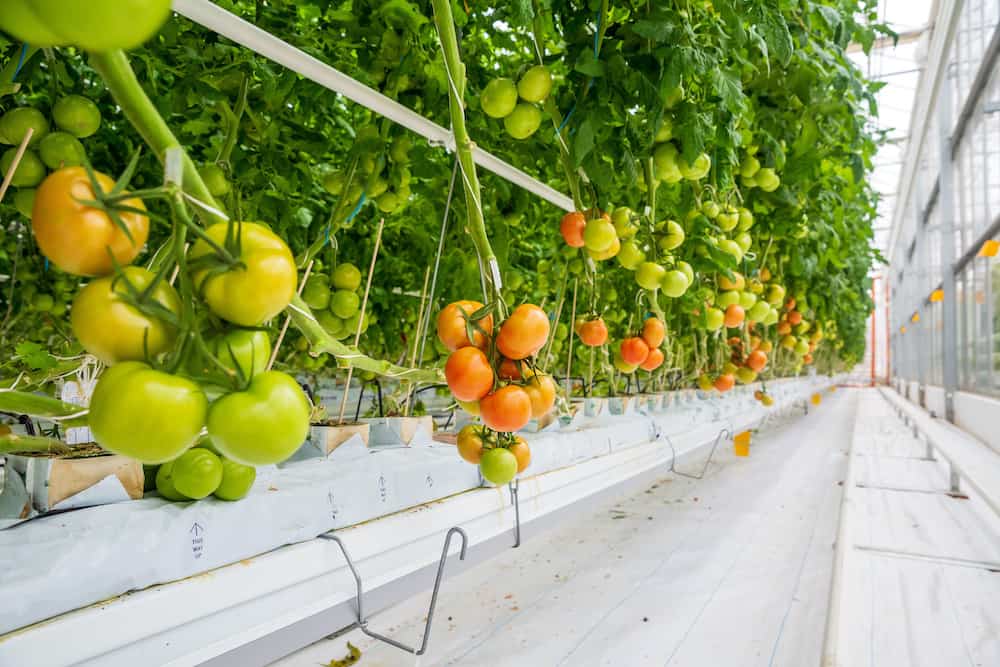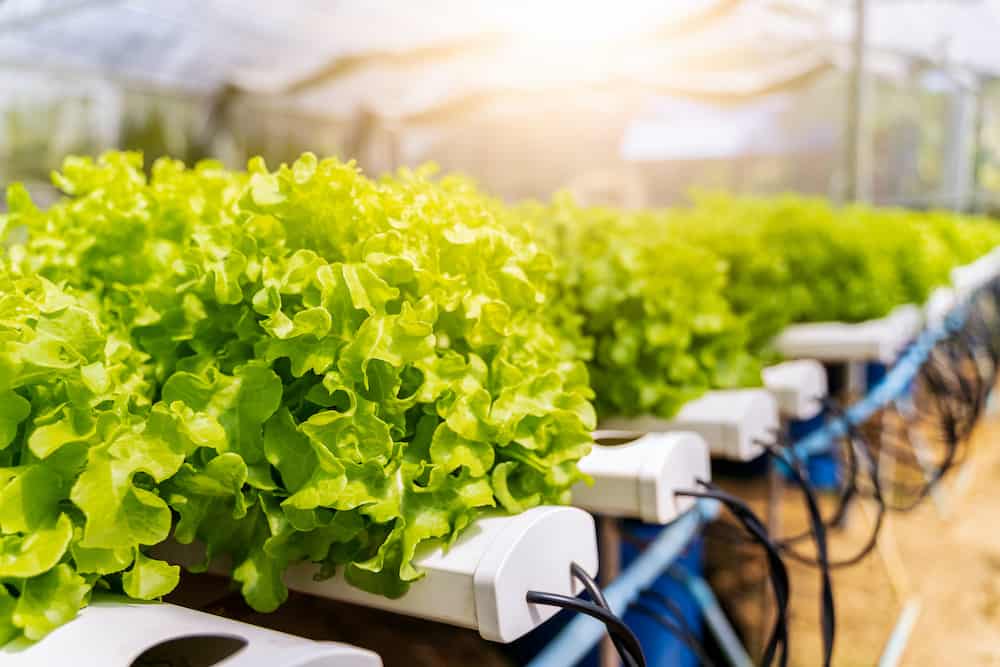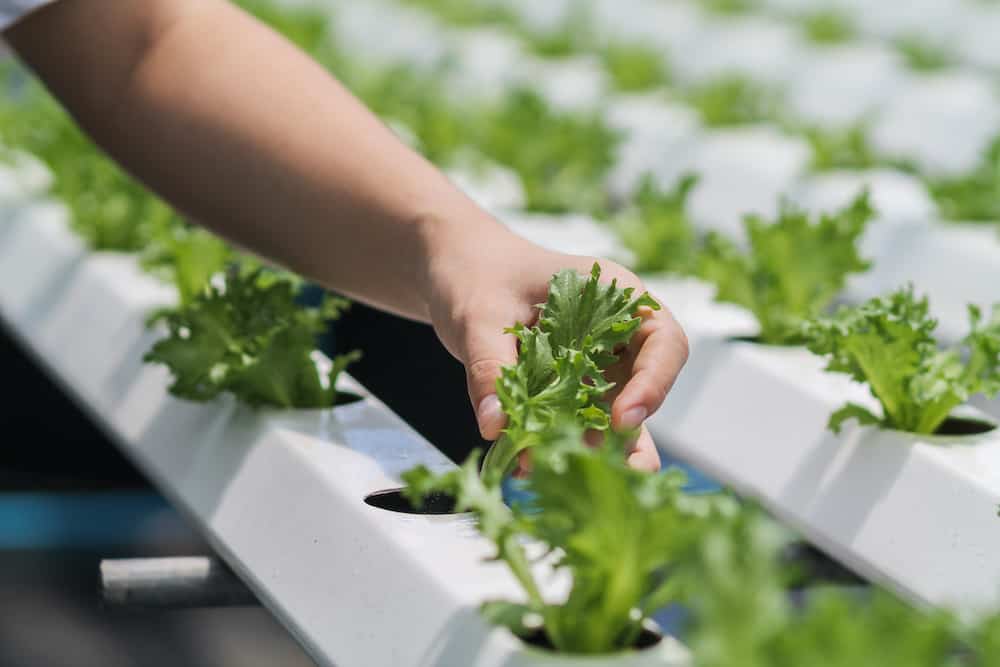Learning the best plants for hydroponics – Few of us have acres of land available to grow our own vegetables and plants. If you struggle with garden space but want to start growing your own food, perhaps it’s time you considered growing plants hydroponically.
Hydroponics is a type of horticulture that involves growing plants without soil. Instead, plants grow in a water-based growing system with added nutrients. When growing with hydroponics, you can control the environment and the nutrients.
It is ideal for gardeners who live in harsh climates. You can grow fruits all year round. You can also grow fruits that are not available in your area or climate zone.
Below, we share the seven best plants for hydroponics. There are many factors that you should consider when choosing a plant for your hydroponics system. These include:
- What will you enjoy eating
- Lighting; can supplement with grow lights
- Height of the plants; how much space do you have
- If the plants will require pollination to fruit
Choosing Plants for Hydroponics
It takes time and money to set up a hydroponics system. You want to be successful growing. Here are our top plants you can eat that are particularly well-suited to hydroponic grows. We’ve also provided some great reasons for why you should be growing them! Read about the best hydroponic herbs to grow.
Best vegetables to grow hydroponically
First up, let’s talk about the best vegetables that grow wonderfully in hydroponic systems.
1. Lettuce
It’s almost guaranteed that hydroponic lettuce will make it into the top five of any list concerning the best plants for hydroponics. Lettuce is one of the easiest vegetables to grow in this way. In addition, and probably because it’s so easy, it’s also one of the most commonly grown foods in hydroponic setups.
Lettuce has a short root structure that matches its short above-ground height. This means it doesn’t need tying up to stakes like many other plants.
With lettuce, you just need to change their nutrient solution on a regular basis and then grow them. Another benefit to growing lettuce is it doesn’t require pollination to produce leaves. This makes it ideal to grow in greenhouses and other enclosed spaces.
It works well in pretty much any hydroponics system, including nutrient film technique, aeroponics, and ebb and flow.
Lettuce also grows extremely fast in a hydroponics setup, so if you stagger planting, you can enjoy an abundant and continuous supply of fresh salad leaves. In fact, the same can be said of most leafy greens, so don’t forget to try spinach, kale, and arugula. Try growing Swiss chard too!
Hydroponic Lettuce Growing Information
- Ideal pH level – 6.0 to 7.0
- Ideal temperature – cool
- Ready to harvest – from six to nine weeks
2. Radishes
Another very easy vegetable to grow in water is radish. You can grow radishes right next to your lettuce, as they enjoy similar cool temperatures and slightly acidic pH levels.
You can propagate them straight from seeds, and you should start seeing seedlings appear within three to seven days. As with lettuce, you can stagger the planting and enjoy an abundance of radishes on a regular basis.
Both the radish roots and leaves are edible. They are well-known for being a superfood that is densely packed with nutrients and antioxidants.
Hydroponic Radish Growing Information
- Ideal pH level – 6.0 to 7.0
- Ideal temperature – cool
- Ready to harvest – three to four weeks
3. Beans
Beans grown in hydroponics are very low-maintenance and hugely productive! Whether you fancy growing green beans, lima beans, pinto beans, or pole beans, they all grow really well. However, you’ll need something to support the pole beans as they grow, such as a trellis or an A-frame.
This is also another vegetable that you can continuously harvest but don’t even need to stagger the planting. Pick beans when the pods are young and tender before the seeds begin to bulge because they can get tough when left on the plant for too long.
Beans are packed full of protein and fiber and can help to control diabetes and improve heart health, among other things.
Hydroponic Beans Growing Information
- Ideal pH level – 6.0
- Ideal temperature – warm
- Ready to harvest – from six to eight weeks
Best fruits to grow hydroponically
The best fruits for hydroponics include cucumbers, tomatoes, bell peppers, and strawberries. It’s always weird putting cucumbers, tomatoes and peppers in the fruit list, but in the interest of being factually correct, seed-containing produce is generally classified as fruit instead of a vegetable.
4. Cucumbers
Another low-maintenance and highly productive fruit that grow well in hydroponic systems is cucumbers. They come in many different varieties, including types that grow on vines and bushes.
If you don’t want to go to the trouble of building a trellis or A-frame, then stick with bush varieties that grow around three feet tall and wide.
Some cucumbers are better for slicing up in sandwiches, while others are better for pickling purposes, so be sure to pick the right kind for you.
If you’ve never grown cucumber plants before, then expect to be shocked at just how fast they appear. The more you pick your cucumbers, the faster they’ll grow.
Unless you have a large family or are growing them to pickle, one or two plants will produce enough cucumbers for most people’s daily needs.
Hydroponic Cucumbers Growing Information
- Ideal pH level – 5.5 to 6.0
- Ideal temperature – hot
- Ready to harvest – from six to eight weeks
5. Tomatoes
You can grow different types of tomatoes in the same hydroponics system, as they all enjoy lots of sunlight and lots of heat. If you’re growing indoors, it’s likely that you’ll need a grow light to help you along.
Depending on the cultivars you pick, you can start seeing fruit from as little as eight weeks, but some may take a lot longer.
You may need to utilize a substrate in the water, such as clay pebbles, to help support the plant’s weight. Using an ebb and flow system and planting tomatoes in 3 – 5 gallon pots is ideal. Tomato plants will need regular pruning so that they don’t take over the entire area, as well as to make it easier to actually spot the tomatoes when they grow.
When figuring out how to grow hydroponic tomatoes, you will also often need extra support from an A-frame that should be placed early, before the plant has too many branches.
Hydroponic Tomatoes Growing Information
- Ideal pH level – 5.5 to 6.5
- Ideal temperature – hot
- Ready to harvest – from eight to 14 weeks
6. Peppers
Peppers grow well in similar hydroponic conditions to tomatoes because they love warmer weather. You can grow them from seed or transplant. We recommend that you use either a deep water culture or an ebb and flow system to grow peppers in.
If you’re growing bell peppers, you can start pruning and pinching them from around eight inches to restrict their height and boost pepper growth.
Other varieties that work great in a hydroponic setup include spicy jalapeno and habanero, as well as sweeter Mazurka, Cubico, Nairobi, and Fellini peppers.
Hydroponic Peppers Growing Information
- Ideal pH level – 5.5 to 6.0
- Ideal temperature – warm to hot
- Ready to harvest – from seven to 11 weeks
7. Strawberries
Usually, fruits are more difficult to grow than vegetables with hydroponics, but strawberries are a convenient and delicious exception to the rule! They take a little while to get going but are very low-maintenance and well worth the wait.
Strawberries grow really well in England, which is a big telltale sign that they thrive in wet conditions. What could get wetter than a hydroculture garden?
Commercially-speaking, strawberries are one of the most popular plants to be grown hydroponically. A hydroponic setup is likely to provide you with bigger fruits than would otherwise be achieved in soil, and you can harvest all season long.
Also, not only are they some of the easiest fruits to grow, but they’re often among the most expensive in the store. If you’re a strawberry lover, then you’ll save a lot of money by growing your own at home.
Hydroponic Strawberries Growing Information
- Ideal pH level – 6.0
- Ideal temperature – warm
- Ready to harvest – four to six weeks after blossoming
Other water-loving fruits to grow in hydroponics include blackberries, grapes, and blueberries.

Benefits of Hydroponics
When you choose the best plants to grow hydroponically, this means you are choosing plants that will grow quickly and easily. There are many benefits of growing plants hydroponically over traditional soil farming methods.
Hydroponic farming is becoming really popular, and there are several good reasons for this. You have more freedom when it comes to planting locations, fantastic water efficiency, higher yields, and much faster growth. Learn more about the differences when you compare hydroponics vs soil.
Hydroponics is a sustainable way of farming because you don’t need to use any chemicals or pesticides in your crops. It’s also eco-friendly because there is no need for tillage, which means less fuel used and less soil erosion.
Hydroponics uses up less space than traditional farming methods, which means you can grow more plants in the same area of space.
Location
Hydroponic gardens allow just about anyone to grow their own food. Firstly, because you don’t need soil, hydroponics allows you to grow plants regardless of whether you have a garden or not.
Secondly, hydroponics is also a great option if you live in an area where the soil isn’t of good enough quality to support traditional farming methods.
Water Efficiency
It’s estimated that hydroponics grows use around 10 times less water than soil farming methods, where water runs off and drains to the environment. In a hydroculture garden, water can be captured and recirculated around the plants’ roots time and time again.
Growth Rate
Plants also grow faster in a hydroponic garden. Grown under the same conditions, the growth rate of a hydroponic plant is around 30% to 50% faster than a plant grown in soil.
One of the reasons for this is that nutrients can be better controlled. Some plants can develop soda can-sized trunks in as little as four months!
Volume
If you compare a hydroponic garden to a traditional soil garden, the roots-in-water system also has the potential to grow a larger volume of food.
In fact, it’s estimated that a hydroponic garden can grow between three and 10 times the amount of crops than a soil garden can in the same space.
This is because the plants are able to grow more closely together. Another reason is due to the existence of vertical stacking hydroponics systems.
No Chemicals Needed
Due to the abundance of weeds and pests in the garden, it can be quite challenging to grow plants organically when they’re planted outside in soil. When you grow plants in a hydroponic setup, however, there’s no need for chemical weed or pest control products.
FAQs about best plants to grow in hydroponics
Hydroponics is becoming a more popular gardening method.
1. Can all plants be grown hydroponically?
Yes! It’s surprising, but with the right setup and nutrients, any plant can be grown hydroponically. Plants grow through a process called photosynthesis. They don’t need soil to grow; they just need water, sunlight, and carbon dioxide. As long as you’re providing your plants with these three things, you can grow them anywhere!
Sunlight can be replaced with grow lights where needed. However, natural sunlight is better for the majority of plants, as it’s more intense, and the light spectrum is more varied.
2. What plants grow best hydroponically?
While it is true that all plants can be grown hydroponically, some plants take to the hydroponics setup better than others. Generally speaking, the best plants for hydroponics are lettuce, spinach, strawberries, and bell peppers, as well as various herbs such as basil, parsley and dill.
These crops are all very resilient, fast-growing, and easy to get started. As such, even if this is your first ever grow, the scales of success are tipped in your favor.
Some crops to avoid in a hydroponic garden are vining plants and corn, due to space.
3. Which herbs grow best hydroponically?
The best herbs to grow in hydroponics are basil, dill, parsley, and cilantro.
4. What is the most profitable hydroponic crop to grow?
Bearing in mind that any plant can be grown hydroponically, it may not come as a surprise to learn that the number one most profitable hydroponic crop is cannabis.
Herbs are also a profitable hydroponic crop. Ginseng fetches really great prices, as do bay leaves, tarragon, chives, mint, dill, basil, and cilantro. Before you choose which herbs to grow, ensure that you have the right hydroponics setup and the perfect conditions with which to accommodate it.
If growing indoors, you may find that you need to utilize a grow light to simulate the sun, as well as control the temperature. That way, you have the best chance of success and will ensure yourself a plentiful crop, each and every grow.

No Soil, No Waste
Among the seven of the best plants for hydroponics, think about which fruits and vegetables you want to grow and then plan your hydroponics system around them. Choose veggies and fruits you enjoy and get the whole family involved in harvesting them for meals!
Hydroponic greenhouse systems kits
What hydroponics equipment do you need
Hydroponic Nutrients for a Bountiful Grow
General hydroponics feeding schedule
Building DIY hydroponic systems
How to Grow Hydroponic Tomatoes
What Fruits Can Be Grown Hydroponically
Once planted, you could have your very own home-grown vegetables on your kitchen table in as little as three weeks!
Hydroponically grown vegetables not only grow faster but also yield more and help to save water! What more could you ask for?


Can you grow different kinds of plants in the same 1 set of pvc system? I just bought a 3 layer 90 hole pvc system for a 8×12 outdoor greenhouse kit.
Great question, never thought about this before. We have always mixed and matched and grown different plants side by side…never considered whether we should or not, we always have